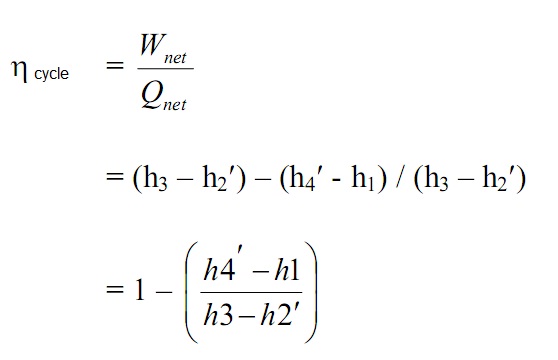The working principle of gas turbine is to convert the chemical energy of fuel into mechanical energy through combustion process, and then the mechanical energy is converted by a generator into electrical energy. Gas turbine works with Brayton cycle and its working fluid is gas. The simplest gas turbine system consists of 3 (three) main components: compressor, combustor and turbine, with the arrangement as shown in Figure 1.
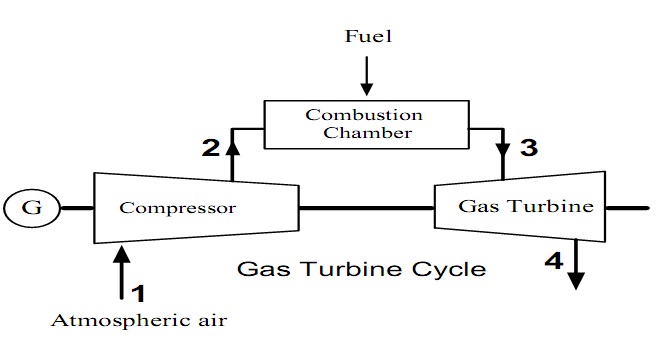
Figure 1: Working Principle of Gas Turbine Diagram
The working principle of gas turbine system is the atmospheric air goes into the compressor which serves to suck air and raise the pressure of air, so that its pressure will rise. Then the high pressure air flow into combustion chamber. In the combustion chamber the fuel is sprayed into the air flow, resulting in the burning/combustion process.
The combustion process takes place at constant pressure, so it can be said that the combustion chamber is used only to raise the temperature of air. High-temperature combustion gas is then entered into a gas turbine in which its energy is used to rotate turbine blades. As much as ± 60% of power generated by turbine is used to rotate compressor itself, the remainder is used to turn generator.
This ideal cycle consists of 2 (two) Isobars processes that occur in the combustion chamber and exhaust process of used gases, and 2 (two) isentropic processes that occur in the compressor and the expansion of gases in the turbine.
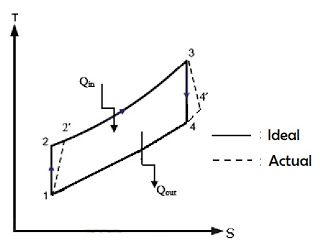
Figure 2: Brayton Cycle
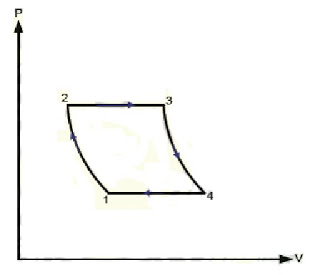
Figure 3: P-V Diagram of Gas Turbine
The working principle of gas turbine process can be explained as follows:
Stage 1-2: This stage is isentropic compression process is in the compressor, condition 1 is the atmosphere air. Temperature of compressed air (T2) can be determined from the relationship of:

where:
rp = ratio of pressure P2/P1
γ = ratio of specific heat at constant pressure and specific heat at constant volume, for air γ = 1.4
Stage 2-3: This stage is the process of adding heat at constant pressure in the combustion chamber. Heat is added to the combustion chamber is:
Qin = Cp (T3 – T2)
Stage 3-4: This stage is isentropic expansion process in the turbine. The exit gas temperature (T4) is calculated by the relationship of:
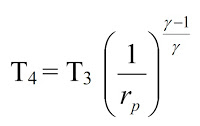
Stage 4-1: This stage is the process of releasing heat to the surroundings at constant pressure. The amount of heat released is calculated by the following formula:
Qout = Cp (T4 – T1)
Working net of gas turbine (Wnet) is a useful work produced by the turbine after expansion work is reduced by the work of compression. Amount of working net of gas turbine is:
Wnet = WT – WK
= (h3 – h4) – (h2 – h1)
Net power turbine is the turbine output power (generator power needed) after considering the losses, the net power turbines are:
Pnet = mg .WT – mg . WK
Cycle efficiency of working principle of gas turbine is the ratio between the amounts of effective heat with the heat that is inserted into system, namely:
